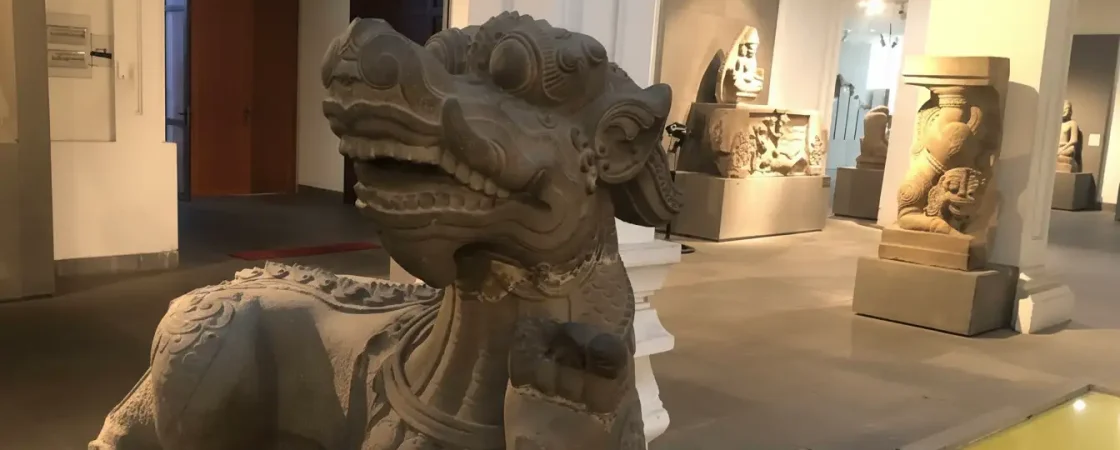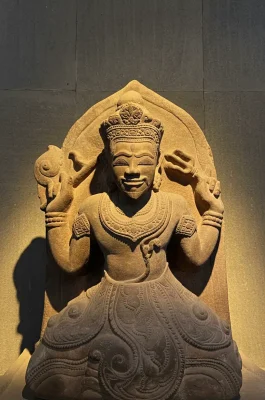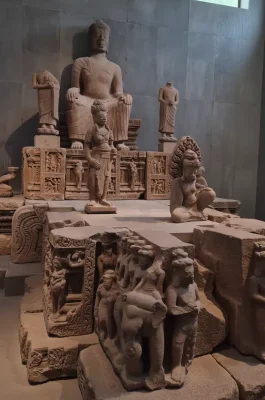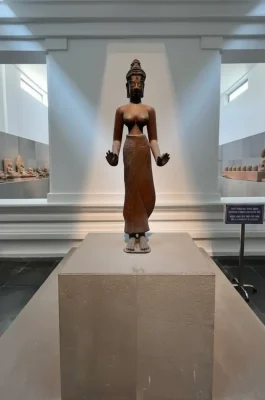Da Nang Museum of Cham Sculpture – Unveiling the Golden Age of Champa
The Da Nang Museum of Cham Sculpture (Bao Tang Dieu Khac Cham) stands as one of Central Vietnam’s most essential historical attractions. Located conveniently in the heart of Da Nang, right by the Han River (Song Han), the museum preserves the world’s most extensive collection of Cham artifacts. Visitors discover the powerful spiritual and artistic legacy of the Champa Kingdom, which thrived in Central Vietnam from the 2nd to the 15th centuries.
I. History and Architecture
The museum’s origins trace back to the early 20th century when French archaeologists from the $\text{École Française d’Extrême-Orient}$ ($\text{EFEO}$) actively collected Cham sculptures unearthed across Central Vietnam.
Foundation: The museum officially opened its doors in 1919, making it one of the oldest museums in Vietnam.
Design Influence: French architects designed the structure, intentionally incorporating motifs from ancient Cham temples and towers. Consequently, the building features a distinct U-shape and elegant, pointed arches that resemble the architecture of the Cham people, creating an immediately recognizable and historic atmosphere.
The Collection: The museum houses nearly 2,000 artifacts, with approximately 500 masterpieces of sandstone, terracotta, and bronze on public display. These artifacts represent key sites of the Champa Kingdom, including My Son, Tra Kieu (Tra Kieu), and Dong Duong (Dong Duong).
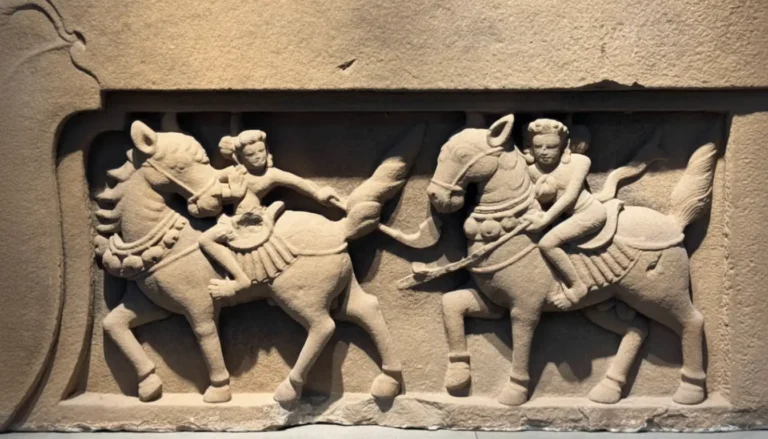
II. Culture, Religion, and Key Exhibits
The exhibits illustrate the deep Hindu and Buddhist influences on Cham culture, with sculptures primarily depicting deities, mythical animals, and religious narratives.
Major Galleries: Visitors navigate through galleries organized by the geographical regions where the sculptures were found. For instance, the My Son Room showcases relics from the Champa’s most sacred religious site, while the Tra Kieu Room features the elaborate, significant Tra Kieu Pedestal.
Artistic Significance: The sculptures demonstrate the exceptional skill of ancient Cham artisans. They vividly portray Hindu gods—like Shiva, Ganesha, and Laksmi—in dynamic forms, offering a profound glimpse into Cham mythology and craftsmanship.
Visitor Aids: Detailed captions accompany each piece in both Vietnamese and English. Furthermore, you can utilize the audio guide service (available in English, French, and Vietnamese) by connecting to the museum’s $\text{Wi-Fi}$ and scanning $\text{QR}$ codes, enhancing your understanding of the artifacts’ historical and religious importance.
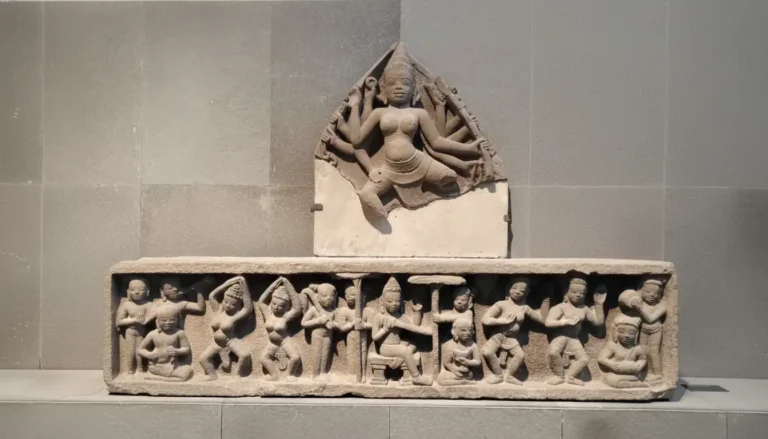
III. Essential Visitor Information
Planning a visit is easy due to the museum’s central location and consistent schedule.
Address: No. 02, 2/9 Street (Duong 2/9), Binh Hien Ward, Hai Chau District, Da Nang City, Vietnam.
Operating Hours: The museum opens daily from 7:30 AM to 5:00 PM.
Entrance Fee: Adult visitors pay an admission fee of 60,000 VND (approximately $2.40 USD). Children typically receive discounted or free admission.
Tips for Visiting: Plan to spend about 1 to 2 hours exploring the exhibits. Please remember to dress neatly and formally, and you must refrain from touching the ancient sculptures to ensure their preservation. Photography is generally allowed, but the museum strictly prohibits using flash.
